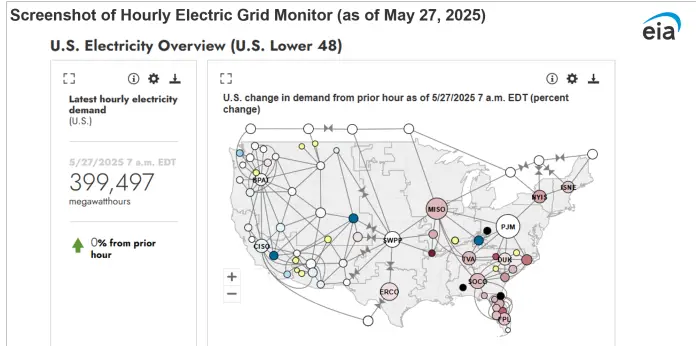As the energy landscape evolves, understanding the metrics of electricity generation becomes increasingly essential for small business owners. Recent analysis from the U.S. Energy Information Administration (EIA) shines a light on this critical topic, highlighting the nuances between different reports that offer insight into the country’s net electricity generation.
The EIA provides data from two distinct perspectives: the Hourly Electric Grid Monitor and the Electric Power Monthly/Annual reports. While these reports serve a similar purpose—to reflect electricity generation—small business owners must recognize their differences. Understanding these variations is crucial for making informed decisions about energy use and costs.
One significant insight from EIA’s analysis is that net generation figures from the Hourly Electric Grid Monitor may not align with those published in the Electric Power Monthly or Electric Power Annual reports. This discrepancy arises because the Hourly Electric Grid Monitor captures only those generating units managed by a balancing authority. These authorities oversee the balance of electricity supply and demand at a regional or local level, which mainly encompasses larger, visible facilities and excludes many smaller resources, like rooftop solar panels.
EIA’s data indicates that for small business owners considering renewable energy solutions, relying solely on the Hourly Electric Grid Monitor can lead to an incomplete understanding of potential energy generation. For instance, while a bustling city might be importing energy from large solar farms, the contributions from many smaller, community-based renewable sources may not be accounted for in the monitor’s figures.
“EIA’s Electric Power Monthly and Electric Power Annual provide a more comprehensive view of net generation in the United States because they reflect all generation from grid-connected power plants located in the United States with at least 1 MW of nameplate capacity,” explains Jonathan DeVilbiss from the EIA. For small businesses operating in states with significant solar initiatives, this means they may want to consult the broader Electric Power reports to gain a more complete picture of energy generation—including prospective savings from solar investments.
The recent adjustments to the methodology, including a new survey to better account for generators metered by balancing authorities, can offer practical implications for small businesses. By examining the newly published lists of generators reflected in the Hourly Electric Grid Monitor, small business owners can identify opportunities for energy savings or local renewable energy partnerships.
However, there are challenges to consider. With different authorities potentially reporting overlapping data—like California’s Independent System Operator, which includes plants in Mexico—small business owners must navigate these complexities. Understanding which reports accurately reflect their local energy landscape will allow them to make better decisions about sourcing energy, thereby influencing their operational costs and sustainability efforts.
Real-world applications stemming from this analysis extend beyond just knowing the data; they involve actionable insights. For example, businesses keen on reducing their carbon footprint may take more calculated steps towards investing in solar energy, informed by both the Hourly Electric Grid Monitor and Electric Power reports. Partnering with local utilities that provide insights into generation data can further enhance their energy strategy.
Additionally, business owners may want to attend local energy forums or workshops to understand the current energy landscape and any available programs. This proactive approach not only helps in identifying potential savings but also positions small businesses to better adapt to future shifts in energy policy and technology.
This kind of engagement is vital, especially as energy costs continue to fluctuate. As energy policymakers refine reporting tools and resources, small businesses stand to benefit from remaining vigilant and informed regarding their energy consumption patterns.
For more detailed information on this analysis and the implications for energy generation in the United States, visit the EIA’s original post at https://www.eia.gov/todayinenergy/detail.php?id=65344. Staying up-to-date with these developments can empower small business owners to make decisions that positively impact their operational efficiency and sustainability goals.
Image Via US Energy



